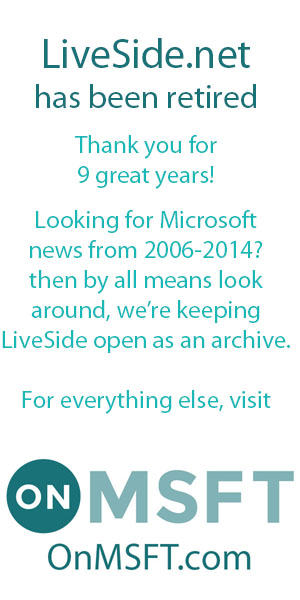![]() Yesterday Microsoft released their new updated version of an online calendar, offering a clean new interface and a basic set of features as part of Outlook.com. We called it a “nice little calendar”, and it is. What it is, however, is far less important than what it isn’t, and that’s a problem. This is 2013, and we’re connected via a multitude of services and a multitude of devices, and a calendar should connect to all of them, seamlessly, and connect us to our friends, events, and tasks, and connect all of those back to us.
Yesterday Microsoft released their new updated version of an online calendar, offering a clean new interface and a basic set of features as part of Outlook.com. We called it a “nice little calendar”, and it is. What it is, however, is far less important than what it isn’t, and that’s a problem. This is 2013, and we’re connected via a multitude of services and a multitude of devices, and a calendar should connect to all of them, seamlessly, and connect us to our friends, events, and tasks, and connect all of those back to us.
David Pogue wrote up a good summary of what a modern calendar should do, in a New York Times blog post entitled “Bringing the Calendar Up to Date“. After lamenting the shortcomings of the Windows 8 “Metro” calendar (which we’ll get back to in just a bit), Pogue lists some of the features a modern online calendar should have, including (paraphrased and shortened):
- “Give us an alternative to tabbing from Start Time to End Time and typing numbers into a tiny New Event box. Let us drag to indicate a meeting’s length”
- Give us intelligent speech – “Make an appointment next Tuesday morning at seven: tennis with Casey,” you can say.
- We should also be able to type plain-English phrases like “tomorrow 1pm lunch mtg” or “4/15 730p Dinner with boss”… (Google, Apple’s Calendar for the Mac, BusyCal and, in particular, the iPhone app Fantastical can all do this.)
- We should be able to put pictures, voice recordings, videos and documents on our calendars
- Grouped categories, so “you can turn off the Kids or Sales group with a single click, hiding them from the calendar for less clutter”
- (W)e should have banners that stretch across multiple squares. We should be able to drag the ends of these banners freely to adjust them.
Microsoft gets a few things right in the new Outlook.com calendar, including flexibility in repeating events, and calendar/contacts integration, but the point here is that there’s so much more that a calendar could and should do, and by starting over, again, users are either left out in the cold, or forced to move to another solution.
Here’s Nathan Buggia, who just left Microsoft after a decade to venture out on his own, on his choice of calendars:
Speaking of calendars, one of the things I wasn’t quite prepared for was for Exchange to disappear. That has been my oracle for schedule and contact information for over a decade. I researched a bunch of offerings, including hosted Exchange and Office 365, but I ended up going with Google. In 2 hours I had a new domain name, website, email and calendar branded with my holding company and syncing to all of my (many) devices, all for free. While I do miss Outlook a little, it is pretty awesome to see how Google’s office can be made better through integration with their services. For example, I had a meeting in Redmond on Friday, and Google parsed the location of the meeting and checked their own traffic report to pop up their own alert 25 minutes ahead of the meeting (instead of the 15 min alert I had set) telling me I needed to leave early because of traffic. Awesome.
Note that Buggia is impressed not only by the simplicity and cross platform play that Google offers, but also the sophisticated features like integration of traffic reports and alerts to offer superior services. Microsoft is a long way off from this, and given that it took 8 months to deliver just a new look, we don’t hold out much hope that any kind of similar sophistication is coming anytime soon.
But Microsoft has a bigger problem with calendars – it has too many of them, and they don’t all work together, not seamlessly. Your Windows 8 calendar should provide all the same functionality that Outlook.com does, or Outlook does, or at least all work the same way within a subset of those functions. They should all be integrated: with Bing and all that means (maps, traffic, address lookup, etc); with all of your contacts across your social networks (and important information, not just birthdays); and of course with each other. You should have a Microsoft account, and your information should just show up, the way you want it to.
With the release of the Outlook.com Calendar, there’s no indication that the Windows 8 Calendar and Outlook.com Calendar have anything to do with each other, other than the Metro/Modern design language. They released on different schedules (although within a couple of weeks of each other), and there’s nothing to indicate that a cool new feature on one will ever show up on the other.
What we got yesterday was a nice little calendar. Nothing consequential, nothing competitive, nothing to draw users away from the competition, just a nice little calendar that after 8 months finally looks the way it should have from the beginning. We had hopes for so much more back in 2007, when we, again, were waiting for a calendar.


